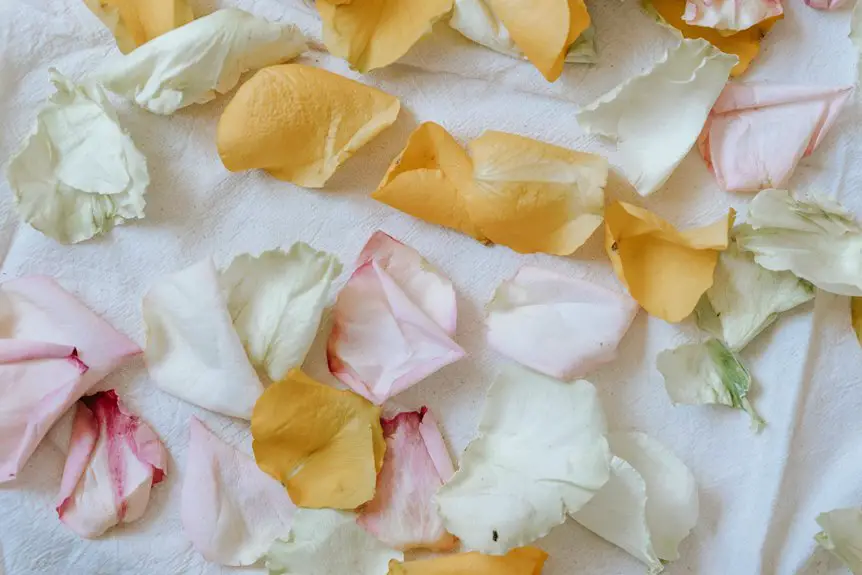You might think all moisture-wicking fabrics work the same way, but that’s not quite right. When you’re choosing gear for tough workouts or outdoor adventures, understanding how one-way and two-way wicking fabrics move sweat can make a big difference in comfort and performance. Knowing the subtle details behind these technologies could change how you stay dry and cool—so let’s explore what sets them apart and why it matters.
Table of Contents
Key Takeaways
- One-way wicking fabrics move moisture only from the skin outward, using tiny channels to direct sweat away efficiently.
- Two-way wicking fabrics spread moisture both away from the skin and outward through the fabric, enhancing breathability and comfort.
- One-way wicking is simpler, faster drying, and ideal for high-intensity activities requiring quick moisture removal.
- Two-way wicking provides better moisture distribution, preventing damp spots but may dry slower and have complex fabric structures.
- The choice between one-way and two-way depends on activity intensity, fabric design, and desired breathability and drying performance.
Understanding Moisture Wicking in Fabrics
Although you mightn’t notice it at first, moisture wicking plays an essential role in keeping you comfortable during physical activities. When you sweat, fabrics with effective moisture management pull moisture away from your skin, helping it evaporate quickly. This process prevents that sticky, clammy feeling you get with regular materials.
Fabric breathability is key here; it allows air to circulate, speeding up evaporation and keeping you dry. You want your activewear to balance moisture removal with airflow, so it doesn’t trap heat or sweat.
Understanding how fabrics handle moisture management helps you pick the right gear, whether you’re running, hiking, or working out. This knowledge guarantees you stay cool, dry, and comfortable, no matter how intense your activity gets.
How One-Way Wicking Fabrics Work
You’ll notice that one-way wicking fabrics move moisture away from your skin in a specific direction, keeping you dry.
This happens because of their unique construction techniques that guide sweat outward.
Let’s explore how these fabrics control moisture flow to enhance comfort.
Moisture Direction Mechanism
When moisture touches a one-way wicking fabric, it moves away from your skin through tiny channels designed to guide liquid in a single direction. This moisture absorption process guarantees sweat doesn’t stay trapped against you, keeping you dry and comfortable.
The fabric’s breathability plays an essential role here, as it allows air to circulate while efficiently pulling moisture outward. You’ll notice that the moisture travels only away from your skin, preventing it from seeping back and causing discomfort.
This directional flow helps regulate your body temperature and reduces the risk of chafing. By managing moisture this way, one-way wicking fabrics maintain a dry feel and keep you cool during physical activities or hot weather conditions.
Fabric Construction Techniques
Understanding how one-way wicking fabrics move moisture away from your skin starts with their unique construction.
These fabrics rely on specialized fabric weaving techniques that create channels directing sweat from the inner surface outward. Advanced textile technologies help engineer fibers with different absorbency levels, ensuring moisture travels only in one direction.
The inner layer, often made from hydrophobic fibers, repels water, pushing it toward the outer hydrophilic layer designed to absorb and release moisture quickly. This deliberate construction prevents moisture from returning to your skin, keeping you dry and comfortable.
By combining precise fabric weaving with innovative textile technologies, one-way wicking fabrics efficiently manage sweat, making them ideal for activewear and performance gear.
You’ll notice the difference in how these fabrics keep moisture moving away from you.
Exploring the Concept of Two-Way Wicking
You’re about to learn how two-way wicking goes beyond pulling moisture in one direction by moving it both ways.
This happens through special fabric structures that manage moisture flow efficiently.
Understanding this helps you see why two-way wicking is ideal for different practical uses.
Defining Two-Way Wicking
Two-way wicking refers to a fabric’s ability to move moisture both away from your skin and outward through the material, enhancing breathability and comfort.
This two-way transport guarantees that sweat doesn’t just leave your skin but also spreads evenly across the fabric, allowing it to evaporate faster.
When you wear two-way wicking fabrics, you benefit from superior moisture regulation, keeping you dry and comfortable during physical activities or in warm conditions.
Unlike one-way wicking, which only pulls moisture away, two-way wicking manages moisture in multiple directions, preventing damp spots and overheating.
Understanding this helps you choose clothing that actively supports your body’s cooling process and keeps you feeling fresh longer, no matter how intense your workout or day gets.
Mechanisms Behind Moisture Movement
Although moisture movement in fabrics might seem straightforward, the process involves several intricate mechanisms working together. When you wear two-way wicking fabric, it actively manages moisture through a balance of absorption and evaporation, enhancing both comfort and fabric breathability.
Here’s how it works:
- Capillary action pulls sweat from your skin into the fabric’s inner fibers.
- Moisture retention occurs briefly within these fibers, preventing dampness against your skin.
- Simultaneously, moisture moves outward to the fabric’s surface, where it evaporates efficiently.
This dynamic interplay guarantees you stay dry and comfortable by continuously moving moisture in both directions.
Practical Applications and Uses
When you choose fabrics that wick moisture in both directions, you get more than just dryness—you gain enhanced comfort and versatility across various activities.
Two-way wicking fabrics excel in athletic apparel, helping you stay cool and dry whether you’re running, cycling, or hitting the gym. They quickly move sweat away from your skin and release it across the fabric, preventing that clammy feeling.
In outdoor gear, this technology shines by managing moisture from both sweat and external sources like rain or humidity. You’ll notice improved breathability and faster drying times, which means you can stay comfortable during hikes, camping trips, or any adventure.
Materials Commonly Used in Wicking Fabrics
Many fabrics used for wicking rely on synthetic fibers like polyester and nylon because they quickly draw moisture away from your skin.
Synthetic fibers like polyester and nylon are key for wicking fabrics as they rapidly pull moisture away from the skin.
These materials form the backbone of effective wicking fabrics by promoting rapid evaporation and comfort.
When choosing wicking fabrics, consider these common materials:
- Polyester blends – These combine durability with excellent moisture management, making them popular for athletic wear.
- Nylon fibers – Known for their strength and quick-drying properties, nylon fibers enhance fabric resilience and moisture transport.
- Polypropylene – This lightweight fiber repels water while allowing sweat to move outward, keeping you dry.
The Role of Capillary Action in Wicking Performance
Because capillary action drives moisture movement in fabrics, it plays an essential role in wicking performance.
When you wear wicking fabrics, capillary action pulls sweat away from your skin through tiny channels between fibers. This natural process moves moisture from areas of high concentration—your skin—to lower concentration zones on the fabric’s surface, where it can evaporate quickly.
The effectiveness of this moisture movement depends on how well the fabric’s structure supports capillary action. In one-way wicking fabrics, capillary action directs moisture outward, keeping you dry.
Two-way wicking fabrics enhance this by moving moisture in multiple directions, improving comfort.
Understanding capillary action helps you choose fabrics that manage sweat efficiently and keep you comfortable during physical activity.
Manufacturing Techniques for Wicking Fabrics
Although the science behind wicking fabrics is fascinating, it’s the manufacturing techniques that bring these materials to life.
When you immerse yourself in fabric development, you’ll see how careful choices and precise production processes shape wicking performance.
Here are three key techniques involved:
- Fiber Selection and Blending: You start by choosing fibers with inherent moisture-wicking properties or blending synthetics like polyester with natural fibers for ideal absorption and drying.
- Weaving and Knitting Structures: The fabric’s structure controls how moisture travels; tighter weaves or specialized knits create channels that enhance one-way or two-way wicking.
- Chemical Treatments and Coatings: You can apply hydrophilic finishes or surface modifications to boost moisture transport, ensuring the fabric moves sweat away efficiently.
Comparing the Benefits and Limitations of One-Way and Two-Way Wicking
When you choose between one-way and two-way wicking fabrics, understanding their distinct benefits and limitations is key to finding the right fit for your needs. One way benefits include efficient moisture transport away from your skin, keeping you dry during workouts. However, two way limitations may involve complexity in fabric design, sometimes leading to slower drying times. Here’s a quick comparison to help you decide:
| Feature | One-Way Wicking |
|---|---|
| Moisture Direction | Moves moisture away from skin |
| Drying Speed | Faster |
| Complexity | Simpler design |
| Breathability | Good |
| Best Use | High-intensity activities |
Understanding these will help you pick fabric that matches your activity and comfort needs.
Frequently Asked Questions
How Do Washing Methods Affect the Longevity of Wicking Fabrics?
You should use gentle washing techniques to preserve fabric longevity. Avoid harsh detergents and high heat, as they can damage fibers and reduce wicking performance. Following care instructions helps your wicking fabrics last longer and stay effective.
Can Wicking Fabrics Cause Skin Irritation or Allergies?
Worried about skin reactions from wicking fabrics? While rare, some allergy triggers in dyes or treatments can irritate sensitive skin. You should always check fabric labels and test new gear to avoid discomfort or allergic responses.
Are Wicking Fabrics Environmentally Friendly or Biodegradable?
You’ll find some wicking fabrics made from eco friendly materials, but many aren’t biodegradable. Check recycling options carefully to reduce environmental impact and choose products designed with sustainability in mind for greener choices.
How Do Wicking Fabrics Perform in Extreme Cold or Wet Conditions?
In extreme cold or wet conditions, wicking fabrics keep you dry by pulling moisture away from your skin. They help prevent chill, but layering is essential since they might not insulate well alone in severe weather.
What Are the Best Care Tips to Maintain Wicking Properties?
To maintain wicking fabric care, you should wash your gear in cold water without fabric softeners, avoid high heat drying, and air dry when possible. These steps keep moisture management effective and your fabric performing well.
- Tetron Fabric for Marine Applications: Durability and Use Cases - June 18, 2025
- Tetron Fabric for Outdoor Furniture: Weather Resistance and Care - June 18, 2025
- Tetron Fabric for Wall Coverings: Style and Application Tips - June 18, 2025





